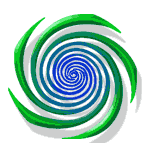|
flip orleyONEIn the late 1700s, Franz Anton Mesmer, a German physician, asserted that human health is affected by invisible fluid found in the body. This fluid could be activated and manipulated by a trained person wielding a magnetic object. The magnetic field could break down any obstructions in the body that restricted movement of this invisible fluid. Mesmer left Austria after being accused of fraud by the Viennese medical community. He finally settled in Paris. Several years later, King Louis XVI commissioned a study to investigate Mesmer's methods. The commission was unable to find any scientific evidence to support Mesmer's assertions, and shortly thereafter the theories of Anton Mesmer faltered in their popularity. TWOJames Braid was a British surgeon who was also an early pioneer of modern hypnosis. He was directly responsible for helping to eliminate the association of hypnosis with the generally accepted theory of animal magnetism, aka, Mesmerism. In the 1840's Braid introduced the word "hypnosis", which loosely translated, means "to sleep" (from Hypnos, the Greek god of sleep). Although it is now generally accepted that hypnosis has nothing to do with sleep, the term is still widely used. THREEIn the early 1900's Freud traveled to Europe to learn hypnosis. Rumor was, he was not a very good hypnotist and decided to exclude the use of hypnosis in his practice and in his teaching. This ultimately led Freudian trained psychiatrists to dismiss the value of hypnosis. This lack of acceptance by the mental health community has led to a further lack of acceptance by the general public. FOURDuring World War II British and American prisoners of war began using hypnosis as a means of coping with the mental and physical strain of life in the POW camps. Shortly after WW II, the British Medical Association approved the use of hypnosis as a legitimate medical technique. The American Medical Association followed suit shortly after. FIVEIn the latter half of the 20th century, Phoenix based physician, Dr. Milton Erickson pioneered the use of indirect hypnosis as a way to work with resistant patients. Contents Copyright 2001, National Public Radio |
||||||||


